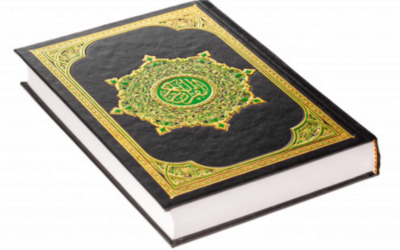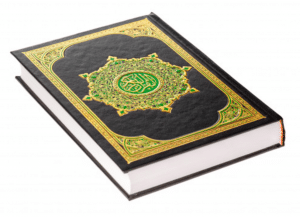In their attempts to attack and undermine the Bible, Muslims sometimes make some strange claims. One of these claims is that the earliest surviving copies of the Old Testament are newer than the earliest surviving copies of the New Testament. This assertion is used to say that the Old Testament is poorly preserved and cannot be trusted. While it is most common among uninformed, “street-level” Muslim objectors, educated public figures have also been known to trot it out. Khalil Meek, a popular American convert to Islam and the executive director of the Muslim Legal Fund of America, claims that the oldest versions of the Old Testament are later than the earliest versions of the New Testament,1 and so deduces that the Bible cannot be trusted. There are a host of things wrong with this, primarily that the claim is utterly untrue and, even if it were true, the conclusion would not necessarily follow from it. If your conclusion doesn’t follow from your claim, and your claim is completely bogus anyway, you have the very definition of a bad argument.
The oldest manuscripts of the Old Testament
We actually have a surprising wealth of pre-Christian Old Testament manuscripts. The famous Dead Sea Scrolls contain manuscripts of nearly every book in the Old Testament in Hebrew and a few also in Greek and Aramaic translations.2 They also further preserve the text in commentaries, as well as in references in other legal and religious documents.3 Some of these surviving copies were written centuries before Jesus was born and all of them are from before our earliest copies of the New Testament. Likewise, we have the scrolls found in the Jewish stronghold at Masada. These are frequently lumped in with the Dead Sea Scrolls in discussions of manuscripts, but they actually represent a different ancient collection. There are also the lesser-known biblical scrolls found in the Judean desert at Nahal Hever4 dating to about the first century AD, or around the time the events of the New Testament were taking place. Still more, there are a number of Greek Old Testament manuscripts from the centuries before the New Testament era.5 So the claim that our oldest copy of the Old Testament is later that our Oldest copy of the New is absurd. Our oldest copies of the Old Testament books are from before the New Testament was even written, much less before its earliest surviving copy.
The oldest “complete copy” of the Old Testament
Perhaps what Muslims like Khalil Meek mean to say is that the oldest complete copy of the Old Testament in one single volume is later. First, this is an anachronistic standard as the Old Testament was not written to be kept in a single bound codex as one big book. It was written as separate books and kept as a collection of scrolls. Indeed, the codex (or bound book with pages like we use today) wasn’t even invented until after the Old Testament was written and didn’t come into wide use until the Christian era. Thus, it would be impossible for the Old Testament to have been gathered into one bound volume until that time. So, if this is all the accusation means, then it is irrelevant. The fact that the Old Testament was preserved as individual scrolls before it was bound together at a later date says nothing about its reliability.
Even worse, however, the accusation still isn’t even true! While we have each of the New Testament books represented in very early manuscripts, some mere decades after they were written, our earliest complete copies of the New Testament gathered together as one single volume are Codex Sinaiticus and Codex Vaticanus of the fourth century AD, followed by Codex Alexandrinus of the fifth century AD. The interesting thing about these manuscripts is that they all contain the Greek translation of the Old Testament as well! Several of the Old Testament books at the beginning of Sinaiticus have fallen off and been lost, but the Old Testament of the equally early Vaticanus is scarcely missing a page and Alexandrinus is only missing ten leaves of its Old Testament! So, in fact (even though it doesn’t actually matter) our oldest complete copies of the Old Testament in one volume are just as old as our oldest complete copies of the New Testament in one volume because they are actually the exact same manuscripts! So even if we interpret the objection in the most generous manner possible, it still doesn’t hold water.
The breadth of the manuscript testimony
In addition to the especially early Hebrew manuscripts mentioned above, we have other Hebrew manuscripts that span the later ancient times on through the Middle Ages. Hebrew manuscripts of the Torah were copied not only by the Jews but also independently by the Samaritans, providing an additional witness. Further, we have very ancient translations from Hebrew into Aramaic, Syriac, and (as was previously noted) Greek. Mostly from the Greek, further translations were made into Latin, Coptic, Ethiopic, Arabic, Gothic, Armenian, Georgian, Slavonic, and other languages, some of these translations being as early as the second century AD.6 The Coptic manuscripts alone preserve at least portions of the majority of the books in the Old Testament canon, most books being represented in multiple manuscripts and often rendered into multiple Coptic dialects.7 In the 4th century, a church father named Jerome translated directly from the Hebrew into Latin to create the Vulgate, thus giving us yet another ancient witness to the state of the Hebrew text at that time. Many of these witnesses may not be quite as early, but their diversity and relative independence matter a great deal to the reliability of the text that they preserve.
In addition to the pre-Christian Greek manuscripts previously noted, we also have both Jewish and Christian Greek manuscripts for the majority of the Old Testament books just from within the first three centuries AD.8 We have manuscripts of the old pre-vulgate Latin text for almost every book of the Old Testament,9 to say nothing of our manuscripts of the Vulgate itself! Not only do we have Jewish and Christian translations, we even have fragments of a 4th-century Gothic translation made by Arian heretics.10
Thus, the text was copied and preserved through the centuries by a variety of disparate communities in a plethora of languages. No one authority ever stood over them all. The Rabbis had no say in what the Christians copied and the Christians had no control over what the Samaritans or the Gothic Arians copied. Neither did anyone authority speak all the necessary languages nor control the vast regions in which these texts were preserved. In this way, all of the ancient and even medieval testimony stands together to confirm rather than undermine the preservation of the text. While some notable difference does exist between these versions, the sheer number and diversity of the streams of preservation greatly increase our ability to discern mistakes or willful changes made in any particular stream and thus to recognize which form is original.
Here we see that the age of the manuscripts is not the only factor. The method and nature of the transmission of the text are also relevant to consider. Relatively late manuscripts can have confirmatory power if they are demonstrably independent. Even if all we had were medieval manuscripts of the Rabbinic Hebrew text, the Samaritan Hebrew text, the Roman Catholic Latin text, and the Eastern Orthodox Greek Text, we still would have powerful confirmation of the accuracy of the text because they are multiple, independent streams of preservation. There are differences between these four streams (as one would expect through centuries of hand-copying such a massive body of text) but the differences can be recognized and explained. They do not present alien or contradictory texts, but rather versions of a discernable original text still preserved in the broad manuscript tradition.
Additional witness
It should also briefly be noted that the text is even further preserved through extensive quotations and allusions in equally wide-ranging sources such as the Mishna, the New Testament, the Talmud, the Samaritan chronicles, and a variety of other documents across various cultures, languages, and religious groups. The writings of Philo of Alexandria, Josephus, and apocryphal works like Sirach, Wisdom of Solomon, and the books of the Maccabees represent a variety of different ancient Jewish communities and all contain references to the Old Testament. Even beyond actual manuscripts, the text of the Old Testament is remarkably preserved through other quite ancient sources. Once again, these sources represent different communities, time periods, and languages, leaving no room for a joint conspiracy between them to alter or corrupt the text.
Conclusion
The oldest manuscripts of the Old Testament are numerous and date before the Christian era, and the text was reliably preserved through a variety of streams which provide us a check on any wholesale changes which otherwise might have been imposed on the text had one community alone controlled its transmission. The Old Testament is ancient and reliably preserved. Muslims’ claims to the contrary are mistaken at best.
References
| 1↑ | Interview on “The Deen Show,” Dec. 2012: https://www.youtube.com/watch?time_continue=586&v=myBXkwMrY08 (Time Stamp 9:37, Accessed 12/18/17) |
|---|---|
| 2↑ | James VanderKam, The Dead Sea Scrolls Today: Second Edition (Eerdmans Publishing, 2010) 47-50 |
| 3↑ | For an entry-level translation of these documents, see Geza Vermes, “The Complete Dead Sea Scrolls in English: Revised Edition” (Penguin Books, 2004) |
| 4↑ | Martin Abegg Jr., Peter Flint, and Eugene Ulrich, The Dead Sea Scrolls Bible (HarperCollins Books, 1999) 519 |
| 5↑ | Larry Hurtado provides a list of pre-Christian Jewish manuscripts of the Old Testament in his book “The Earliest Christian Artifacts” on page 18, footnote 9 |
| 6↑ | Henry Swete, An Introduction to the Old Testament in Greek: Second Edition (Cambridge University Press, 1914) 88 |
| 7↑ | Ibid, 106-107 |
| 8↑ | Larry Hurtado, The Earliest Christian Artifacts (William B. Eerdmans Publishing Company, 2006) 19-20 |
| 9↑ | Henry Swete, An Introduction to the Old Testament in Greek: Second Edition (Cambridge University Press, 1914) 93-97 |
| 10↑ | ibid 117 |






